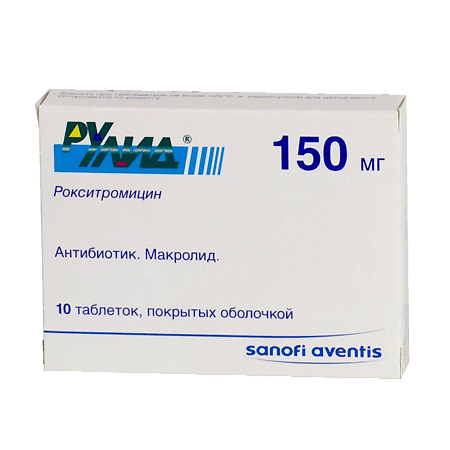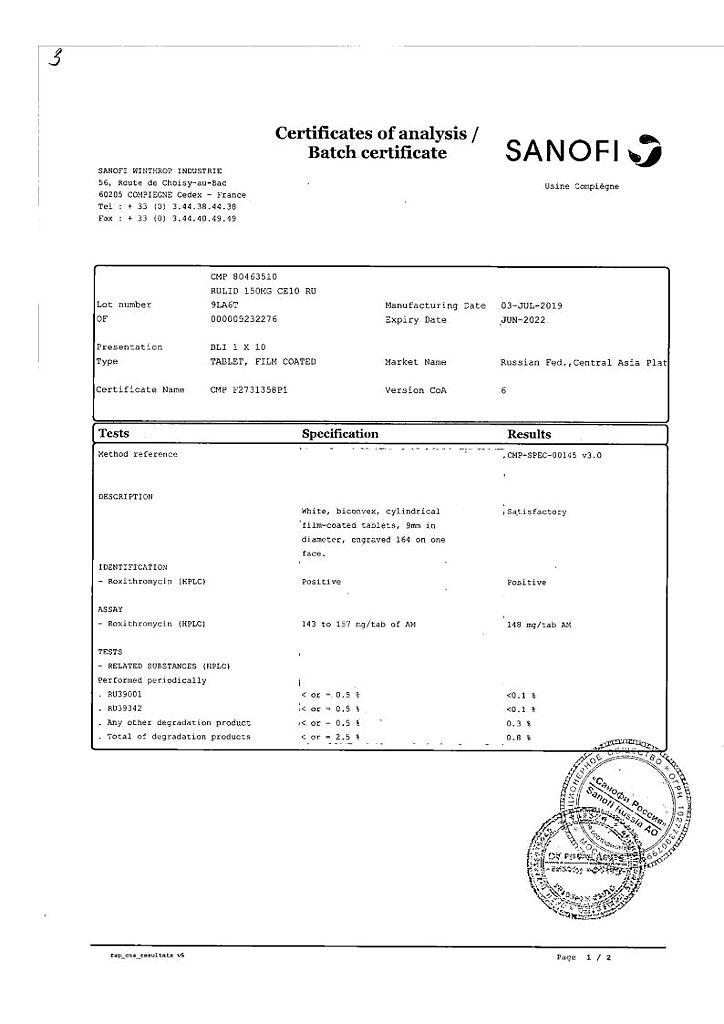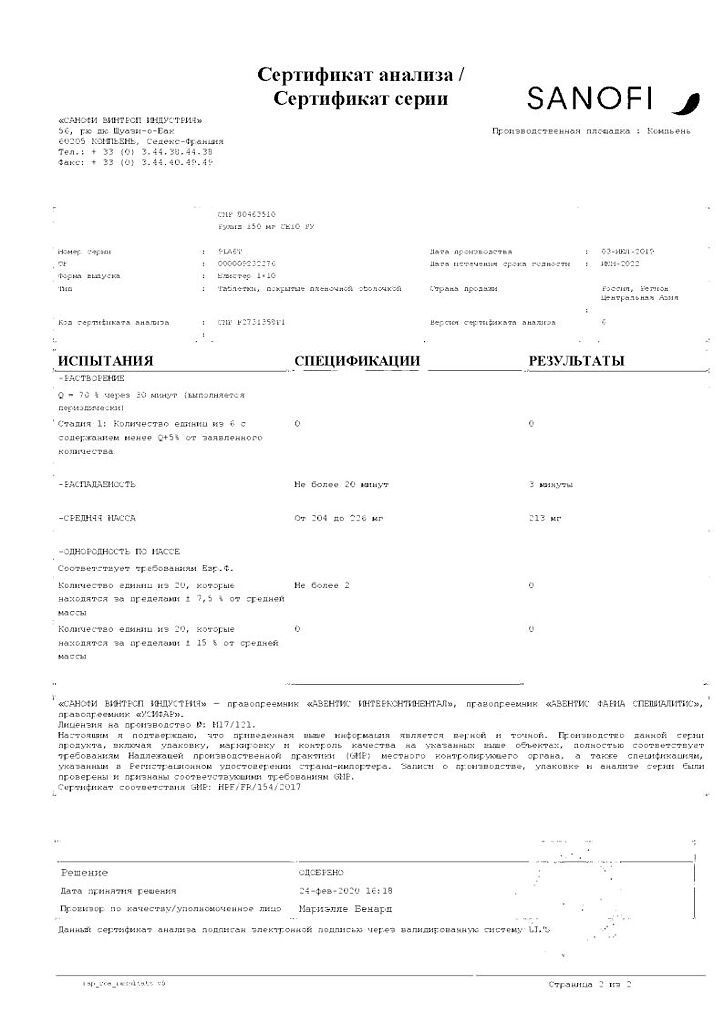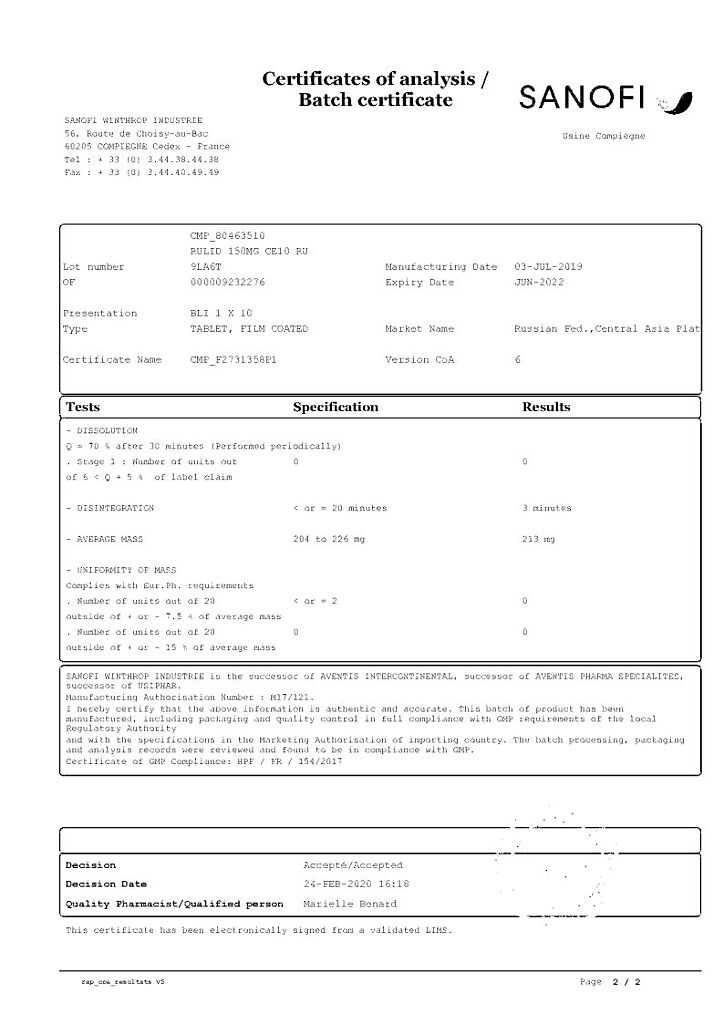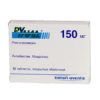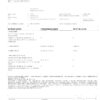No products in the cart.
Description
Pharmacodynamics
A semisynthetic oral macrolide antibiotic.
The drug is usually sensitive to: Bordetella pertussis. Borrelia burgdorferi. Moraxella (Branhamella) catarrhalis. Campylobacter coli. Campylobacter jejuni. Chlamydia trachomatis, psittaci and pneumoniae. Clostridium perfringens. Corynebacterium diptheriae. Enterococcus. Gardnerella vaginalis. Methi-S-Staphylococcus. Neisseria meningitidis. Helicobacter pylori. Legionella pneumophilia. Lysteria monocytogenes obiluncus. Mycoplasma pneumoniae. Pasteurella multocida. Peptostreptococcus. Porphyromonas. Propionibacterium acnes. Rhodococcus equi. Streptococcus pneumoniae. Streptococcus spp.
Moderately sensitive to the drug: Haemophilus influenzae. Ureaplasma urealyticum. Vibrio cholerae.
The following are resistant to the drug: Acinetobacter spp. Bacteroides fragilis. Enterobacteriaceae. Methi-R Staphylococcus. Pseudomonas spp. Fusobacterium. Mycoplasma hominis. Nocardia.
Pharmacokinetics
Absorption and distribution
Roxytromycin is rapidly absorbed after oral administration. Roxithromycin is more stable than other macrolides in the acidic environment of the stomach. Taking the drug 15 minutes before a meal has no effect on pharmacokinetics. After taking the drug in a dose of 150 mg, maximum blood concentration averages 6.6 mg/l and is reached after 2.2 hours. Administration of the drug at 12-hour intervals ensures maintenance of effective concentrations in the blood for 24 hours.
The elimination half-life after a single dose of 150 mg is 10.5 hours. After a single dose of 300 mg of roxithromycin the average maximum concentration in the blood is 9.7 mg/l and is reached after 1.5 hours. When re-administration of roxithromycin (150 mg twice daily, for 10 days) the equilibrium state in plasma is reached between 2-4 days, making C mah 9.3 mg/l. Administration of 300 mg of roxithromycin every 24 hours for 11 days provided a C mah of 10.9 mg/L.
Roxithromycin penetrates well into many tissues, especially the lungs, palatine tonsils and prostate. The drug also penetrates well into cells, especially into neutrophilic leukocytes and monocytes, stimulating their phagocytic activity. Binding to blood proteins is 96%, has a saturable character and decreases at concentrations of roxithromycin over 4 mg/l.
Metabolism and excretion
Roxytromycin is metabolized only partially, more than half of the active substance is excreted unchanged mainly in the feces and in the urine. In adults with normal renal and hepatic function 65% of roxithromycin is excreted with the feces. Less than 0.05% of the accepted dose of roxithromycin is excreted in breast milk.
Pharmacokinetics in special clinical cases
In renal failure excretion of roxithromycin and its metabolites through the kidneys is approximately 10% of the taken dose. The dose of the drug does not change in renal failure. In severe hepatic insufficiency the elimination half-life is prolonged (25 h) and C mah is increased.
Indications
Indications
Upper respiratory tract infections: acute pharyngitis, tonsillitis, sinusitis;
lower respiratory tract infections: pneumonia (including those caused by such “atypical” pathogens as Chlamydia psittaci, Chlamydia pneumoniae, Moraxella (Branhamella) catarrhalis, Legionella pneumophilia, etc., bronchitis, bacterial infections in chronic obstructive pulmonary diseases;
skin and soft tissue infections;
genital infections (except gonorrhea), including: urethritis, cervicovaginitis;
infections in odontology.
Pharmacological effect
Pharmacological effect
Pharmacodynamics
Semi-synthetic antibiotic of the macrolide group for oral use.
The following are usually sensitive to the drug: Bordetella pertussis. Borrelia burgdorferi. Moraxella (Branhamella) catarrhalis. Campylobacter coli. Campylobacter jejuni. Chlamydia trachomatis, psittaci and pneumoniae. Clostridium perfringens. Corynebacterium diptheriae. Enterococcus. Gardnerella vaginalis. Methi-S-Staphylococcus. Neisseria meningitidis. Helicobacter pylori. Legionella pneumophilia. Lysteria monocytogenes obiluncus. Mycoplasma pneumoniae. Pasteurella multocida. Peptostreptococcus. Porphyromonas. Propionibacterium acnes. Rhodococcus equi. Streptococcus pneumoniae. Streptococcus spp.
Moderately sensitive to the drug: Haemophilus influenzae. Ureaplasma urealyticum. Vibrio cholerae.
Resistant to the drug: Acinetobacter spp. Bacteroides fragilis. Enterobacteriaceae. Methi-R Staphylococcus. Pseudomonas spp. Fusobacterium. Mycoplasma hominis. Nocardia.
Pharmacokinetics
Suction and distribution
Roxithromycin is rapidly absorbed after oral administration. Roxithromycin is more stable than other macrolides in the acidic environment of the stomach. Taking the drug 15 minutes before meals does not affect pharmacokinetics. After taking the drug at a dose of 150 mg, the maximum concentration in the blood averages 6.6 mg/l and is achieved after 2.2 hours. Taking the drug at intervals of 12 hours ensures that effective concentrations in the blood are maintained throughout the day.
The half-life after a single dose of 150 mg is 10.5 hours. After a single dose of 300 mg of roxithromycin, the average maximum concentration in the blood is 9.7 mg/l and is reached after 1.5 hours. With repeated administration of roxithromycin (150 mg twice a day, for 10 days), the equilibrium state in plasma is achieved between 2-4 days, amounting to Cmax 9.3 mg/l. Taking 300 mg of roxithromycin every 24 hours for 11 days resulted in a Cmax of 10.9 mg/l.
Roxithromycin penetrates well into many tissues, especially the lungs, tonsils and prostate gland. The drug also penetrates well into cells, especially into neutrophilic leukocytes and monocytes, stimulating their phagocytic activity. Blood protein binding is 96%, is saturable and decreases at roxithromycin concentrations above 4 mg/l.
Metabolism and excretion
Roxithromycin is only partially metabolized; more than half of the active substance is excreted unchanged, mainly in feces and urine. In adults with normal renal and hepatic function, 65% of roxithromycin is excreted in the feces. Less than 0.05% of the administered dose of roxithromycin passes into breast milk.
Pharmacokinetics in special clinical situations
In case of renal failure, excretion of roxithromycin and its metabolites through the kidneys is approximately 10% of the dose taken. The dose of the drug does not change in case of renal failure. In severe liver failure, the half-life is prolonged (25 hours) and Cmax increases.
Special instructions
Special instructions
Use in patients with liver failure and elderly patients
When prescribing the drug to patients with liver failure, special caution, monitoring of liver function and dose adjustment are necessary.
When prescribing the drug to patients with renal failure, as well as elderly patients, there is no need for dose adjustment.
Active ingredient
Active ingredient
Roxithromycin
Composition
Composition
Active ingredient:
roxithromycin – 150 mg.
Excipients:
hydroxypropylcellulose,
poloxamer,
povidone KZO,
colloidal silicon dioxide,
magnesium stearate,
talc,
corn starch.
Shell composition:
hypromellose,
glucose anhydrous,
titanium dioxide,
propylene glycol.
Pregnancy
Pregnancy
Roxithromycin is contraindicated during pregnancy.
Small amounts of roxithromycin pass into breast milk, so you should stop breastfeeding or taking the drug.
Contraindications
Contraindications
Hypersensitivity to macrolides;
simultaneous use of drugs such as ergotamine and dihydroergotamine;
combined use with ergotamine derivatives and ergotamine-like vasoconstrictors is not allowed, as it can lead to the development of “ergotism” and necrosis of limb tissue.
With caution: use in patients with severe liver failure.
Side Effects
Side Effects
Anaphylactic reactions: angioedema, bronchospasm, weakness, anaphylactic shock (rare).
Skin reactions: rash, redness, urticaria.
Gastrointestinal reactions: nausea and vomiting, abdominal pain, diarrhea (very rarely with blood).
Reactions from the liver: increased liver enzymes (ALT, AST, alkaline phosphatase), cholestatic or hepatocellular acute hepatitis.
Possible: slight changes in taste and olfactory sensations.
In some cases: symptoms of pancreatitis, dizziness, headache, paresthesia were observed.
Possible: development of superinfection due to the growth of insensitive microorganisms.
Interaction
Interaction
Concomitant use of terfenadine is not recommended, due to an increase in the concentration of the latter when taking macrolide antibiotics simultaneously, which can lead to the development of severe ventricular arrhythmias.
Although this complication has not been reported with roxithromycin, and studies in volunteers did not show any pharmacokinetic interactions or ECG changes, the combination of roxithromycin and terfenadine is not recommended.
Taking drugs such as astemizole, cisapride, pimozide can lead to prolongation of the QT interval and/or severe cardiac arrhythmias as a result of an increase in their serum concentration, as a result of the competitive effect for the CYP3A isozyme between the above drugs and macrolide antibiotics.
There is no interaction with warfarin, carbamazepine, ranitidine, antacids and oral contraceptives.
Monitoring of prothrombin time or international normalized ratio (INR) is recommended when roxithromycin is coadministered with vitamin K antagonists.
Roxithromycin may displace the protein bound disopyramide, resulting in increased serum levels of disopyramide.
ECG monitoring and, if possible, determination of serum disopyramide levels are recommended.
When taken simultaneously with digoxin, the absorption of the latter may increase. It is recommended to monitor the electrocardiogram and serum levels of cardiac glycoside.
This is mandatory if symptoms of an overdose of cardiac glycosides appear.
Roxithromycin may increase the half-life of midazolam, resulting in increased and prolonged action.
Overdose
Overdose
In case of overdose, gastric lavage and symptomatic therapy are necessary.
There is no specific antidote.
Storage conditions
Storage conditions
Store at a temperature not exceeding +25°C.
Keep out of the reach of children.
Shelf life
Shelf life
3 years.
Manufacturer
Manufacturer
Opella Healthcare International CAC, France
Additional information
| Shelf life | 3 years. |
|---|---|
| Conditions of storage | Store at temperatures not exceeding +25 ° C. Keep out of reach of children. |
| Manufacturer | Opella Healthcare International SAS, France |
| Medication form | pills |
| Brand | Opella Healthcare International SAS |
Related products
Buy Rulid, 150 mg 10 pcs. with delivery to USA, UK, Europe and over 120 other countries.

